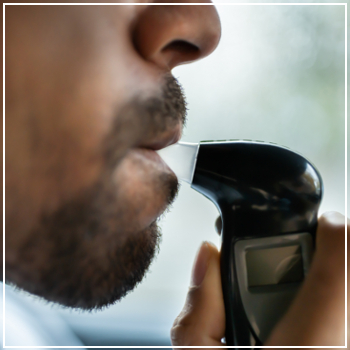Why Do States Require Ignition Interlock Devices?
Before the car can start, the driver must blow into a mouthpiece to check their blood alcohol concentration (BAC). If the BAC is below the legal limit, the car starts. However, if it's above, the device will stop the engine from starting until the driver provides a clean test. This simple but effective measure helps prevent impaired individuals from driving. Some IIDs also require a “rolling retest†after the car has started. This ensures that someone else didn’t provide the initial sample. The device won’t shut the car down immediately, but it will log the event and alert the driver to pull over. This data is then sent to the DMV for monitoring and enforcement. As of 2020, all U.S. states have laws requiring ignition interlock devices for certain DUI offenses. New Mexico was the first state to implement this law in 2005, mandating that anyone convicted of drunk driving install an IID. Over the following decade, the state saw a significant drop in DUI incidents—more than 70,000 cases were prevented during that time. Encouraged by these results, other states followed suit. Some states only require IIDs for repeat offenders, while others, like Connecticut, apply the rule to all DUI offenders, even those with their first offense. Studies show that all-offender states experience greater reductions in drunk driving and related deaths. Today, 34 states and the District of Columbia have such laws in place. In Connecticut, IIDs aren’t just for DUIs. They’re also required for license reinstatement in cases where someone: The Centers for Disease Control and Prevention (CDC) reports that IIDs can reduce DUI offenses by up to 70%. However, the biggest challenge remains ensuring that drivers actually install and maintain the device. Without consistent use, the effectiveness of IIDs diminishes. MADD, another leading organization, found similar results. Their research shows that IIDs reduce repeat DUI offenses by 67%, drunk driving deaths by 15%, and are the most reliable method for keeping impaired drivers off the road. Some states allow individuals with a DUI to get a hardship license, which permits limited driving for essential trips like work or school. To qualify, the driver usually needs to install an IID first. This restriction helps ensure that those who have been convicted of drunk driving don’t take unnecessary risks on the road. Massachusetts is one example of a state taking a tougher stance on drunk driving. In 2005, the state passed Melanie’s Law, which increased penalties for DUI offenses and established an IID program. It also created stricter rules for license suspension and revocation. Connecticut also requires IIDs for license reinstatement. After completing the required waiting period and meeting all conditions, a driver can regain their license only if they have an IID installed. This process often involves a restoration notice, a valid license, and a commitment to keep the device in place for several months. Beyond preventing drunk driving, IIDs collect important data about the driver. For instance, the number of attempts to start the car can indicate how seriously a person is trying to stay sober. Rolling tests and GPS tracking help ensure that the driver is not cheating the system. Cameras are sometimes used to confirm that the correct person is providing the breath sample. However, this data isn’t always immediate. Drivers need to bring their vehicles in for maintenance every 30 to 90 days. During these visits, the device is recalibrated, and all stored data is uploaded to the DMV. Technicians also check for signs of tampering, which could lead to license reinstatement or additional penalties. If a driver fails to follow the maintenance schedule, their IID privileges may be revoked, and their license suspension will resume. That’s why it’s crucial to stay on top of these requirements. Need an ignition interlock device installed? After finishing your DMV paperwork, contact DaSilva’s Auto Body to schedule an appointment and get back on the road safely. Propylene glycol methyl ether acetate (PGMEA), also known as propylene glycol monomethyl ether acetate, molecular formula for C6H12O3, colorless hygroscopic liquid, has a special smell, is a non-pollution solvent with multiple functional groups.Mainly used in ink, paint, ink, textile dyes, textile oil solvent, also can be used in liquid crystal display production cleaning agent. Flammable, higher than 42 ° C may form explosive steam/air mixture.
Propylene Glycol,99.5% Purity Pma Solvent,Methoxy-2 Propyl Acetate,Chemical Solvent Propylene Glycol SHANDONG S-SAILING CHEMICAL CO,LTD , https://www.sdqh-chem.com Over the last 15 years, many states have introduced ignition interlock devices (IIDs) as a way to keep drunk drivers off the road. These devices work similarly to a breathalyzer and are connected directly to a vehicle's ignition system.
Over the last 15 years, many states have introduced ignition interlock devices (IIDs) as a way to keep drunk drivers off the road. These devices work similarly to a breathalyzer and are connected directly to a vehicle's ignition system.IIDs Are Now Mandatory in Every State
Data Shows IIDs Work
IIDs Are Often Required for a Hardship License